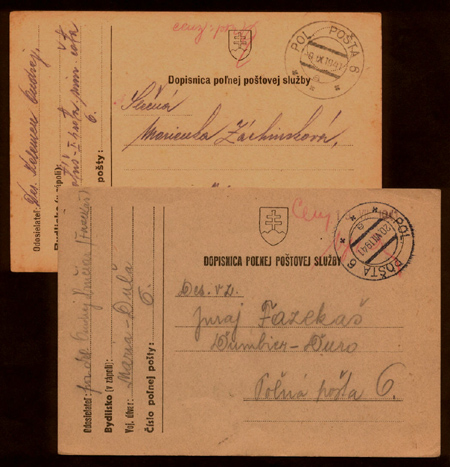|
Because of the fear of having a war with Germany, an International conference was held by France and Great Britain where a decision was made to allow Germany the right to annex the borderline region composed of 50% of "volksdeutsche" (ethnic Germans). In 1938,
Germany in a bloodless takeover invaded the western part of Czechoslovakia.
First claiming the borderline region known as the "Sudetenland" where three million ethnic-Germans lived.
The western part of Czechoslovakia after the government abdicated
was named by the Germans as the protectorate state of Bohemia-Moravia. | |
|
Slovakian Army Stamps On July 28, 1943 three semi-postal stamps were issued to commemorate the Slovakian Army, which participated in the crusade against Bolshevism. The surtax was used to benefite the Army | |
|
Slovakian Schnelle Division
By August 1941, the rest of the corps was brought home for refitting.
The Slovaks created two new divisions, a 10,000 strong mechanized
"Slowakische Schnelle Division" (Slovakian Swift Division) and a
security division of 6000 men. The Schnelle Division was formed
from personnel of the 1st Infantry Division and from members of
the brigade and was under the command of Gustav Malar. | |
|
Slovakian Postal History
The Slovakian postal administration had free franking service
for their own military personnel. Special field cards were issued
and used by military personnel. All military mail was examined and
censored by Slovakian and German military authorities. |
|

Slovakian Field Post
On top shows two Slovakian field post cards mailed by soldiers in the Schnell
Division. Notice the Slovakian Coat-of-Arms shield printed in the center.
The double ring circular dated cancel with the words "Pol. Posta" (Field Post)
was applied. |
[ Front Page ] [ Top ] [Previous Page [Next Page]
